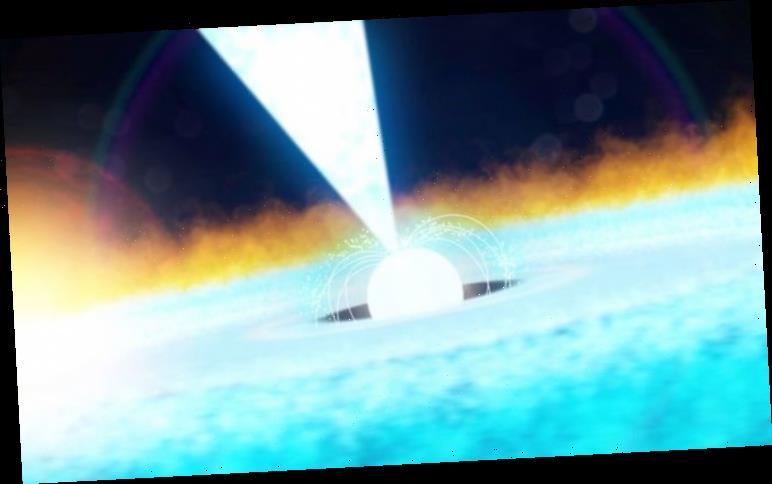The explosion, classified as a Type I X-ray burst, released as much energy in 20 seconds as the Sun does in 10 days. The NASA telescope tech, based on the International Space Station (ISS), detected the sudden X-ray spike – the brightest ever detected by NICER and originating from an object named SAX J1808.4-3658 – on August 20.
Peter Bult, an astrophysicist at NASA, said: “This burst was outstanding.
This burst was outstanding
Astrophysicist Peter Bult
“We see a two-step change in brightness, which we think is caused by the ejection of separate layers from the pulsar surface, and other features that will help us decode the physics of these powerful events.”
The observations reveal many phenomena never before seen together in a single burst.
In addition, the resulting cosmic fireball briefly brightened again for reasons astronomers have yet to explain.
The detail NICER captured on this record-setting eruption will help astronomers add to their understanding of the physical processes driving the thermonuclear flare-ups of it and other bursting pulsars.
A pulsar is a kind of neutron star, the compact core left behind when a massive star runs out of fuel, collapses under its own weight, and explodes.
Pulsars can spin rapidly and host X-ray-emitting hot spots at their magnetic poles.
As the object spins, it sweeps the hot spots across our line of sight, producing regular pulses of high-energy radiation.
DON’T MISS
Asteroid danger: 100% certainty of impact warns space expert [INTERVIEW]
Hubble snaps galaxy ‘like a portal to another dimension’ [PICTURES]
Shadow land: ‘Alien life can exist in 2D universe’ [ANALYSIS]
READ MORE
-
Was Darwin wrong? New evolution theory ’can help find alien life’
J1808 is approximately 11,000 light-years away in the constellation Sagittarius.
The star spins at an incredible 401 rotations every second and is one member of a binary system.
The pulsar’s companion is a brown dwarf, an object larger than a giant planet yet too small to be a star.
A continual stream of hydrogen gas flows from the companion toward the neutron star, accumulating in a vast storage structure called an accretion disk.
Gas in accretion disks does not easily move inward.
But every few years, the disks around pulsars such as J1808 become so dense that a large amount of the gas becomes ionised, or stripped of its electrons.
This makes it more difficult for light to move through the disk.
The trapped energy triggers a runaway process of heating and ionisation trapping even more energy.
The gas becomes increasingly resistant to flow and begins spiralling inward, ultimately falling onto the pulsar.
Source: Read Full Article






